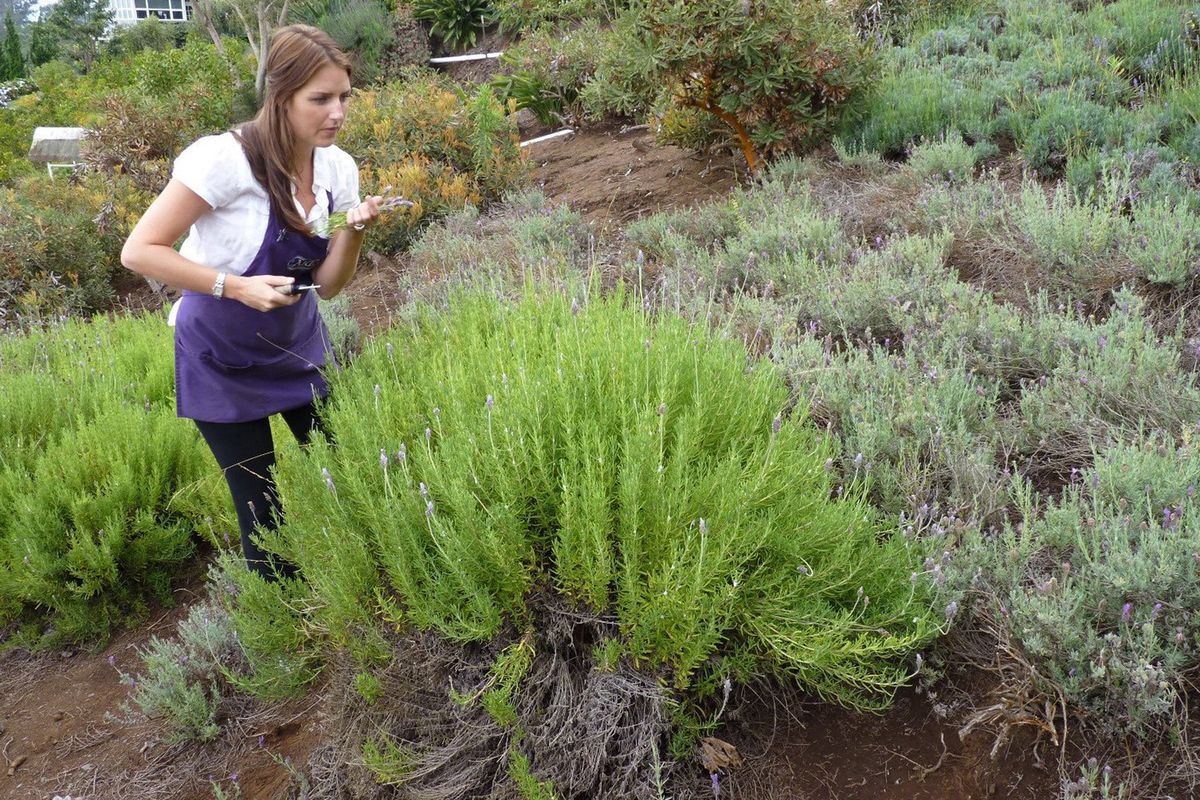Travel: Go upcountry in Maui for farm tours, good food

KULA, Hawaii — Mornings in Maui generally demand nothing more strenuous than pulling on a pair of shorts and sandals and heading for the beach. So what am I doing in long pants, hiking shoes and a jacket?
No swimming or snorkeling today. Instead, a dozen of us have signed up for a tour at the O’o Farm in upcountry Maui, 3,500 feet above the ocean on the slopes of Haleakala volcano.
We compose a you-pick salad with snippets of wild anise, garlic chives and mustard greens; sample espresso made from farm-grown coffee beans; and sit down to a farm-to-table feast prepared by a gourmet chef.
Spread out on platters near an outdoor kitchen are chunks of yellow pineapple, bright red strawberries and cherimoya, a melt-in-your mouth fruit as smooth as pudding. And those are just the appetizers.
Upcountry Maui is a region of lush vegetation and winding, two-lane mountain roads. Most visitors know the area as the slice of old Hawaii they drive through on the way up to the summit of 10,023-foot Haleakala. A half-dozen microclimates and rich, volcanic soil make growing conditions ideal on the volcano’s lower slopes.
Now young farmers, many connected to local chefs, are reclaiming patches of land that native Hawaiians once planted with sweet potatoes and taro. Their aim: to “re-localize” food production and showcase native ingredients.
For visitors to Maui with time to explore the back roads, culinary discoveries await at out-of-the-way restaurants and boutique farms cultivating everything from wine grapes to exotic herbs.
“Despite all our resources, we still import 80 percent of our food supply in Maui,” said Richard Clark, manager at the O’o Farm, an 8.5-acre organic farm in Kula.
A decade ago, owners of the Pacific’O and I’O restaurants in beachfront Lahaina bought upcountry land and began experimenting with new and traditional crops.
With dinner entrees in the $30 to $40 range at Pacific’O Lahaina restaurant, $50 each for an upcountry farm tour and lunch was a bargain.
The morning began with samples of sweet, red coffee berries. Then Clark took tourgoers through the kitchen garden, inviting us to pick our own salad mix while Korean-born chef Caroline Schaub worked on lunch.
On the menu was broiled fish cooked with Maui sweet onions and a marinated tofu dish she composed with kale, daikon radishes, two kinds of beets and yellow squash.
Most of what there is to see in upcountry Maui could be covered in a day trip from the beach resorts, but spending a night or two makes sense if you’re combining farm visits with a trip to Haleakala or the drive to Hana, the isolated little town on the eastern end of the island.
Puluke Farm Bed and Breakfast, a protea farm in Kula, has a cozy cottage and big views down to the sugarcane fields below in the central valley. In upcountry Maui, even summer nights can be chilly. Blankets come in handy for sleeping and relaxing on the deck with a glass of wine at sunset.
Down the road at Grandma’s Maui Coffee, the owners roast coffee in the kitchen the way their grandmother did in 1918. Too tempting to pass up were the pineapple-coconut squares and cinnamon coffee cake baked with her recipes.
Nearby was a spot many locals describe as one of the most peaceful places on Maui – the Ali’i Kula Lavender Farm. With 45 varieties of lavender and native gardens filled with tropical flowers, macadamia and olive trees, something is blooming year-round.
A stop at the Tedeschi Vineyards off Highway 37 in Keokea is a treat, especially for drivers returning from the long drive to Hana on the rough road skirting the back side of Haleakala.
Island-grown ingredients end up in many of the 30 goat cheeses made by Eva and Thomas Kafsack, the German owners of the solar-powered Surfing Goat Dairy in the lower Kula area. A flavor called “Purple Rain” contains a mix of local lavenders. “Rolling Green” is flecked with fresh garlic chives.
The Kafsacks run one of only two goat dairies in Hawaii, an expensive undertaking given the costs of turning dry brush land into irrigated pastures. “You can’t survive just selling cheese to restaurants and hotels,” says Thomas Kafsack. So they invite the public in for cheese-making classes and tours.